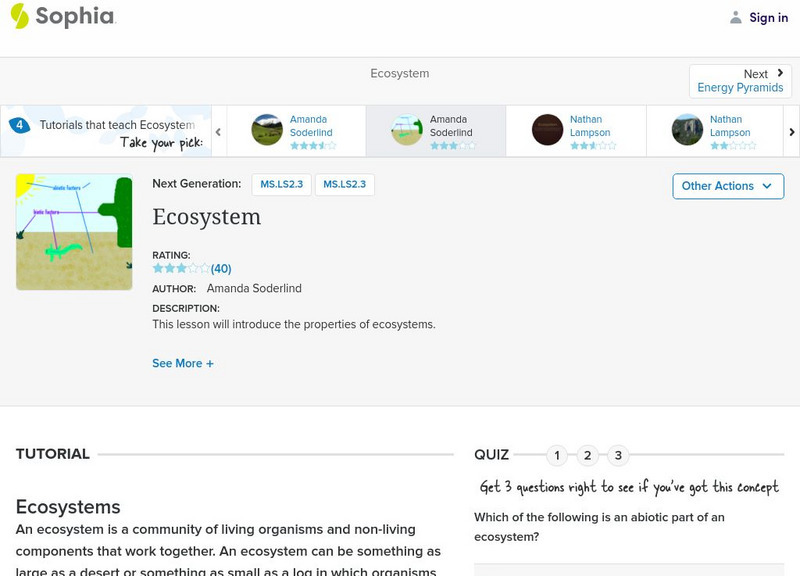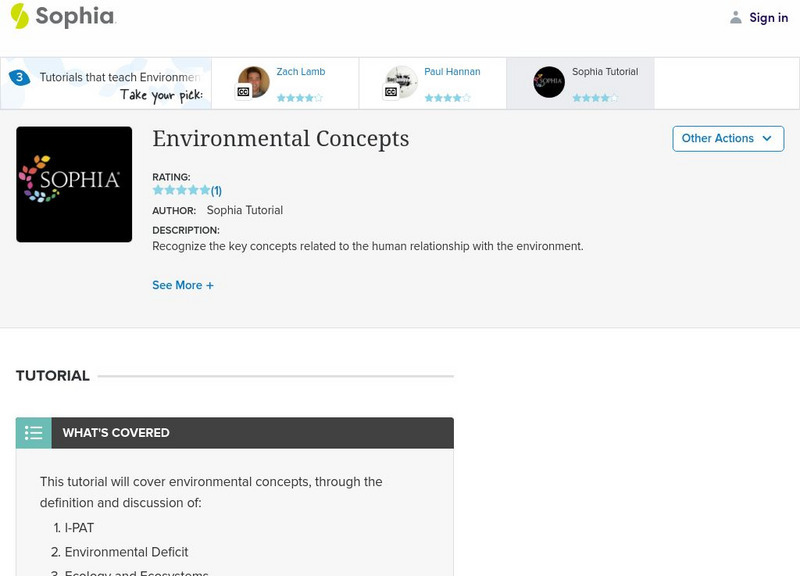Other
Open2.net: Ecosphere
Designed by the Open University and the BBC, this website from Open2.net explores ecosystems. Included is a lengthy discussion on closed ecosystems and their importance to research, as well as a virtual ecosystem, an interactive showcase...
Annenberg Foundation
Annenberg Learner: Ecology Lab
Build your own ecosystem, and explore the effects of these interrelationships.
Sophia Learning
Sophia: Ecosystems
Gives basic information about the community that forms between living and non-living factors that function together in an ecosystem. [47 secs]
Science Struck
Science Struck: The 6 Chief Levels of Organization in Ecology
Describes six levels of organization in the biological world - individual species, population, community, ecosystem, biome, and biosphere.
ClassFlow
Class Flow: Ecosystems
[Free Registration/Login Required] A flipchart covering the concepts and ideas required to understand ecosystems, with particular concentration on the tropical rain forest.
Sophia Learning
Sophia: Environmental Concepts
This lesson will discuss the key concepts related to the human relationship with the environment.
PBS
Nh Pbs: Nature Works: Ecosystems
How would you define an ecosystem? Check out this educational resource to learn more about the living and nonliving parts of different ecosystems.
US Geological Survey
Usgs: Desert Ecosystems
What elements are present in a desert ecosystem? What impact might humans have upon it? Learn more about the processes that affect desert ecosystems by visiting this site. Contains only one large illustration.
The Franklin Institute
Franklin Institute: Ecosystems, Biomes, and Habitats
This site is provided for by The Franklin Institute Online. "Open the door and step into your ecosystem." Content describes ecosystems and related material such as biomes, habitats, energy cycle, extinction, recycling, and more.
Math Science Nucleus
Math/science Nucleus: Wetland Animation
This animation in storybook format tells the story of Tules Pond and also gets into pond and lake ecosystem information.
SMART Technologies
Smart: Living and Nonliving Things
Students define the characteristics of living and non-living things, identify living and non-living components of an ecosystem, and identify the roles of organisms in living systems.







